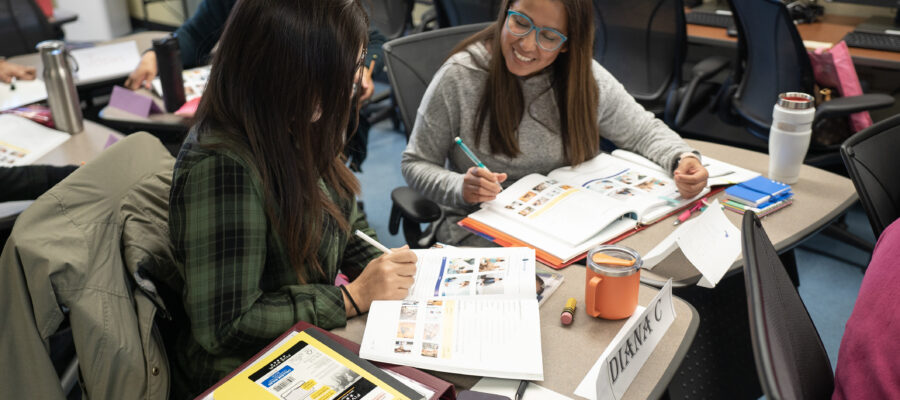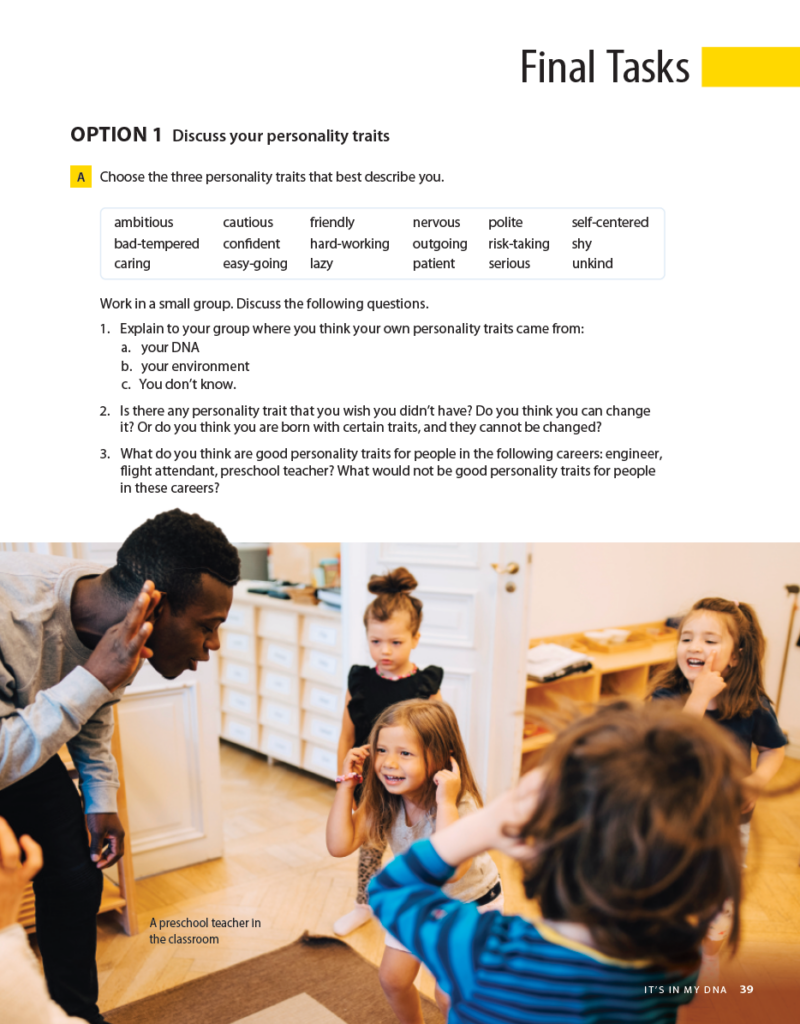Competence, in its general sense, reflects the ability to perform a task successfully, and it is typically comprised of a blend of both innate abilities and learned skills. For English-language learners to show that they are prepared to navigate the complexities of higher education, they must not only demonstrate linguistic competence, they must also master essential academic competencies such as creativity, collaboration, and problem-solving.
How can instructors help students acquire these skills and put them into practice? There are multiple paths to developing academic competence, but there are a few core principles that can help foster them.
1. Authentic Text-Based Learning
Expose ELL learners to authentic texts like scholarly lectures and debates. This broadens their language understanding and familiarity with formal academic language structures, going beyond traditional textbooks.
For example, this listening from Pathways Listening and Speaking Level 4, Unit 7 is structured around a podcast that explores the topic of environmental fatigue, helping students apply their listening skills to a real-world issue.

Choose content subjects that align with students’ future mainstream academic endeavors, and ensure the material taught is not only linguistically enriching but also relevant to their overall educational journey. If students are still developing their academic interests, exposure to many varied academic topics can also be beneficial.
The academic themes in Pathways, for example, expose students to topics around Health Science, Technology, Sociology, History, and beyond.

2. Teach Academic Strategies
Empower students by explicitly teaching academic strategies and creating opportunities for them to apply these skills. This might include ways to collaborate in a group or key critical thinking skills, such as summarizing information or applying knowledge in real situations. Offering explicit practice of these “soft skills” allows students to experiment with higher-level thinking in a safe context.
In this Collaboration Skill from Pathways Listening and Speaking Level 1, Unit 6, students are given specific language to help them support and encourage other participants in a group discussion.

And in this Critical Thinking explanation and activity from Pathways Listening and Speaking Level 2, Unit 6, students practice applying previous knowledge to a highly relatable discussion topic: learning English.

See also the In Focus post 3 Tips to Improve Visual Literacy for more specific information about developing visual literacy skills.
3. Learning Through Experience
Making abstract concepts tangible is key to academic competence. Incorporate real-world tasks and hands-on projects to help students grasp academic subjects more deeply. Whenever you can, infuse enjoyment into the learning process with activities that invite students to have fun with the concepts being taught. This will build confidence and creativity, motivating students to try harder.
In this task from Pathways Listening and Speaking Level 1, Unit 6, students role-play selling a house. The task requires them to demonstrate academic competence by summarizing key features and using persuasive language, but it’s also enjoyable and relatable.

4. Individualized Learning Paths
Teaching methods should be tailored to address individual students’ needs and their unique learning styles and challenges. The integration of multilevel instruction and formative assessment are crucial to helping students become independent learners.
Multilevel instruction accommodates diverse proficiency levels within the ELL class. This tailored approach ensures that learners progress at their own pace, establishing a solid foundation before advancing to more complex language skills. In this example from Pathways Listening and Speaking Level 1, Unit 3, the Teacher’s Book material provides instructors with support to help students who may be struggling to complete a listening task.

Complementing multilevel instruction, formative assessment serves as a compass, providing real-time feedback on student performance. Insights into students’ abilities will allow you to address gaps in understanding and encourage students to challenge themselves. This knowledge not only allows for targeted support but also facilitates effective guidance for individualized growth.
For example, in Pathways Listening and Speaking Level 2, Unit 6, the Teacher’s Book material provides a quick method for assessing students’ understanding of how to apply previous knowledge. Instructors can use the information gleaned from this assessment to better understand their students’ needs going forward.

See the In Focus post Implementing Formative Assessment in Five Simple Steps for more on formative assessment.
5. Choice and Independence
Finally, provide students with choices and independent learning opportunities. When learners have the freedom to explore topics aligned with their interests, they become more invested in their learning. Similarly, asking students to work independently nurtures self-motivation and critical thinking, ultimately enhancing overall academic proficiency.
In these Final Tasks from Pathways Listening and Speaking Level 3, Unit 2, students are offered two options. Each option requires students to demonstrate mastery of the content learned, but each also has a unique content focus and structure to allow a more personalized expression of that mastery.
Students must ultimately be able to work autonomously to succeed, so independent study opportunities are vital. That might take the form of rich, additional practice activities, such as those offered on the Pathways Online Practice on the Spark platform.

Teachers play a pivotal role in shaping competent, confident, and communicative young adults. By applying these straightforward strategies, you can create a vibrant academic environment. In this setting, students aren’t just learning a language; they’re developing the comprehensive skills needed for academic success throughout their educational journey.
Now in its third edition, the Pathways series sets students up for success in and out of the classroom with highly visual, real-world content and rigorous language instruction.





